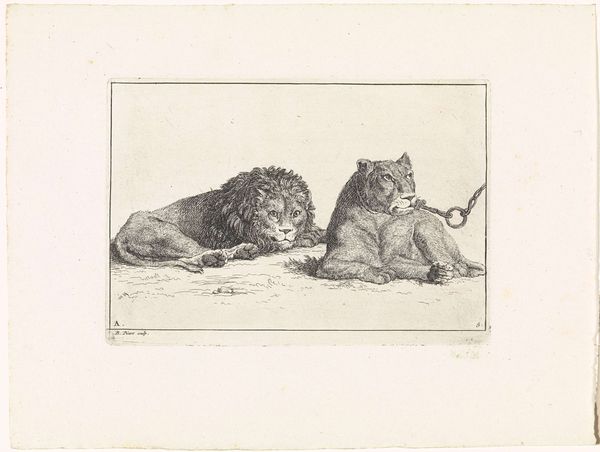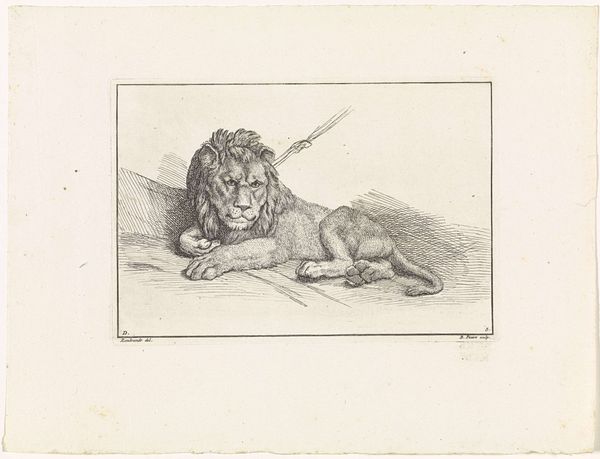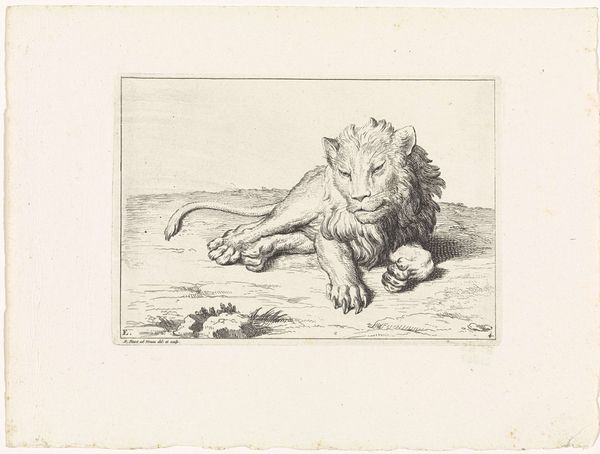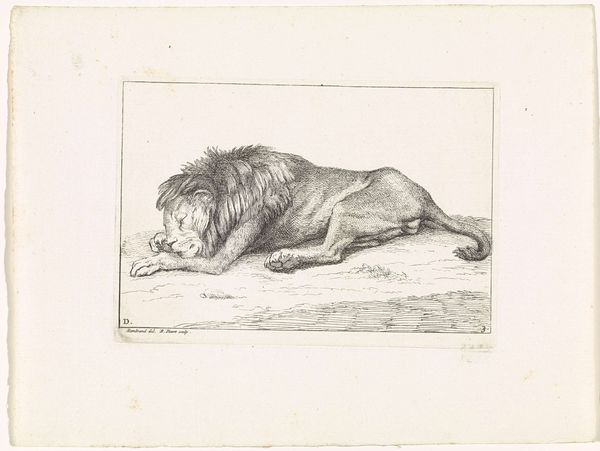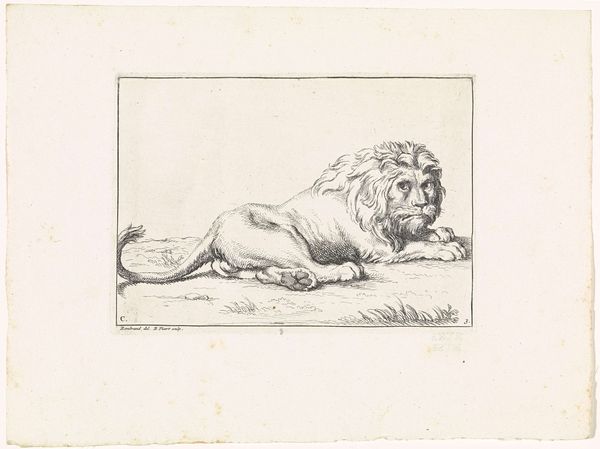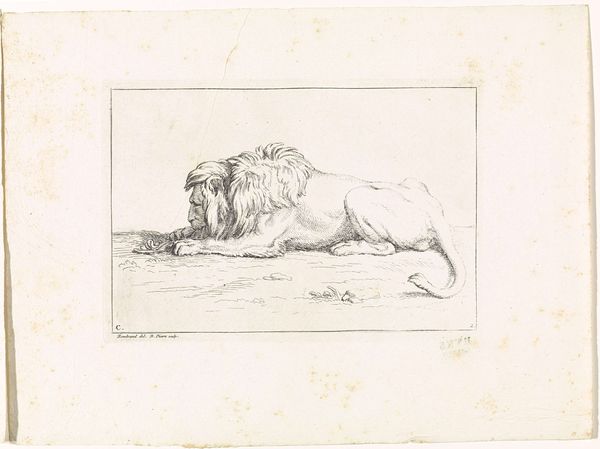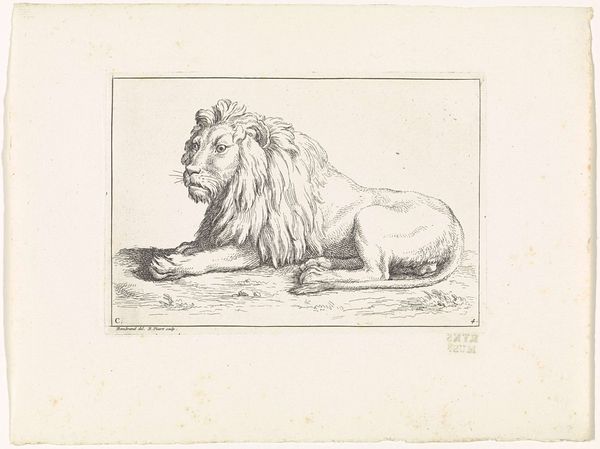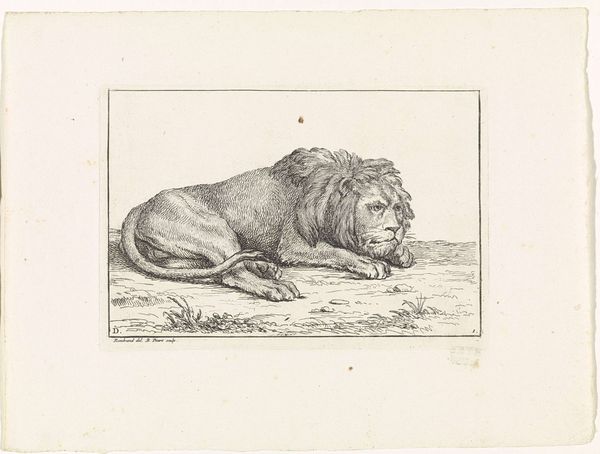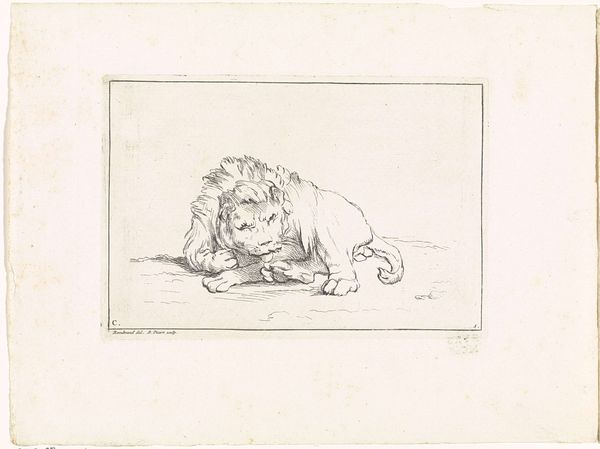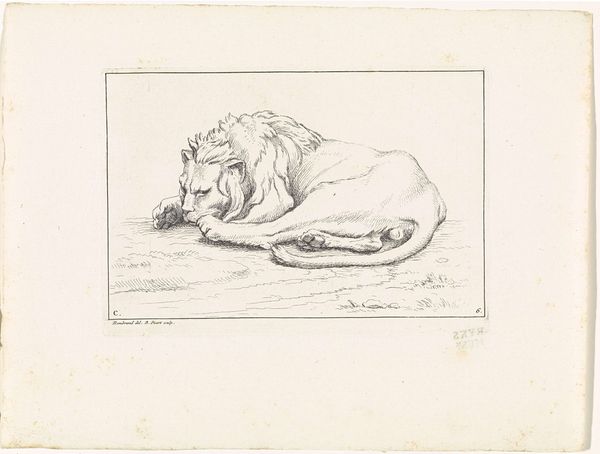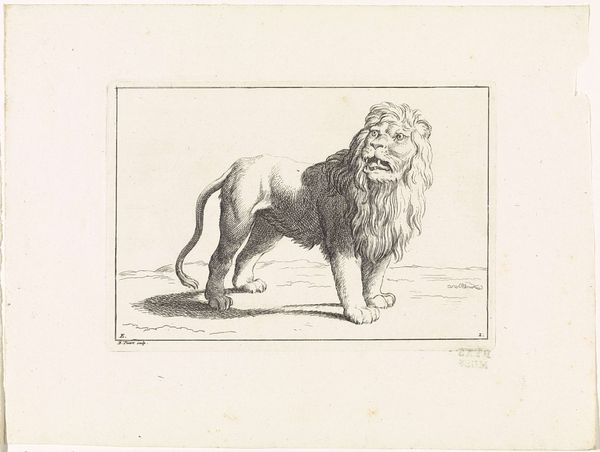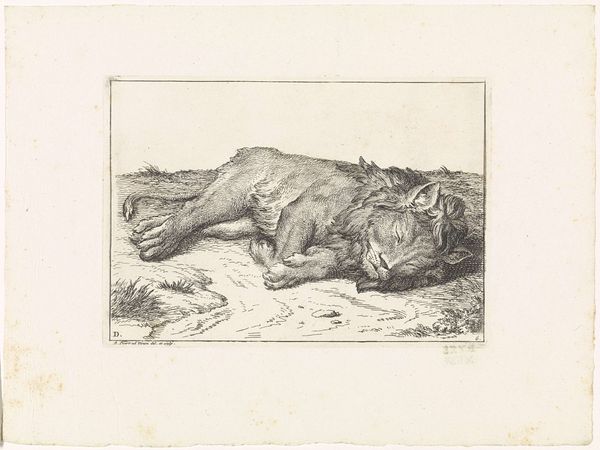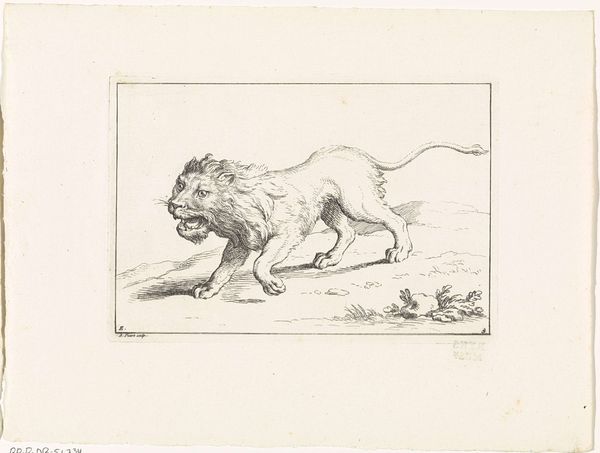
print, engraving
#
baroque
#
animal
# print
#
old engraving style
#
landscape
#
genre-painting
#
engraving
Dimensions: height 121 mm, width 175 mm
Copyright: Rijks Museum: Open Domain
Curator: Here we have "Landscape with Two Lions," an engraving made in 1729 by Bernard Picart, now residing here at the Rijksmuseum. My first impression? Utter tranquility. They seem to be thoroughly relaxed, almost posing. Editor: Absolutely. What strikes me is the inherent paradox. We are socialized to associate lions with power, even violence, yet here, their languid postures and the delicate linework evoke a sense of peaceful coexistence within the landscape. How might we interpret this subversion of expectations? Curator: Consider the socio-political context of the time. Royalty often used lion imagery to project authority, especially across Europe. However, prints like these were circulating widely among the middle class. Could Picart be democratizing that imagery, softening its power, almost domesticating it for a different audience? Editor: I think that's an important angle. Also, what are we to make of the fact that it's a print, and so easily reproduced? It shifts the discourse around animal representation itself. The relatively simplistic engraving allows for the figures of the lion to be almost archetypical. Notions about animals in European cultural consciousness come to mind...the print renders these powerful beasts generic. Curator: It does highlight a fascinating shift in how images were consumed and their meaning shaped by widespread circulation. Picart may well have been responding to the social appetite for imagery, crafting something easily accessible. How would he consider its influence beyond aristocratic power structures? Editor: It also prompts us to consider our own biases as viewers, perhaps reassessing our own anxieties regarding how the politics of nature, wilderness, or the human control over them at the dawn of an industrializing society, plays a part in interpreting their passivity here. Curator: Exactly, the historical context really allows for a better viewing lens here. It makes me think deeply about the human impulse to dominate. Editor: For me it’s all about disrupting the dominant narrative. To examine an artist using engraving as a subversive tool against its typical symbolism encourages us to see both the lion, and this artistic choice, in a fresh light.
Comments
No comments
Be the first to comment and join the conversation on the ultimate creative platform.
